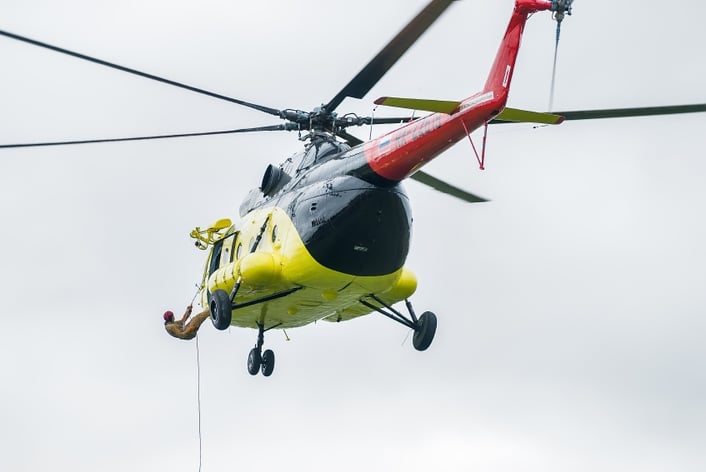
You are dispatched to a “patient unconscious” and arrive on scene to find an obese man in his mid-50s, unresponsive and apneic. As his wife is describing his extensive cardiac history, the man goes into cardiac arrest and you initiate resuscitation. He is asystolic, so you immediately turn to drug therapy, only he has no veins to speak of. Your only option for drug therapy is through the endotracheal tube, which is also the best means of securing his airway, so you set up your equipment, have the suction unit close by, and position yourself for intubation. It’s not going to be easy.
The patient’s size alone is probably going to make your job of airway management difficult. But there are many other factors that contribute to a difficult airway. Here, we’ll discuss the most common difficulties, as well as techniques that will assist you in predicting which airways will be the most challenging. Like every aspect of emergency medicine, it pays to plan ahead and be prepared.
Overcoming the Obstacles
Oral intubation, while considered the gold standard in airway management, can be tricky. Although it’s not a complicated procedure, your success rate will depend on several factors, the first of which begins with your skill level. It’s become more difficult for paramedic students to obtain real-life intubation experience prior to completing school, which means many new paramedics graduate having never intubated an actual person. Once you get a few under your belt, your confidence will improve, but this may take years, depending on your call load, so stay up on your skills and practice your technique often.
The other tricky aspect to oral intubation is the patient. All medics hope for the easy tube when the time comes, but many patients can be difficult. Here are a few factors that contribute to a difficult airway:
- Anatomy – The size and shape of your patient plays a critical role in airway difficulty. The most common hurdles are:
- Short, thick necks
- An anterior trachea
- Obesity
- Trauma – Damage to the face or jaw, along with excessive bleeding can impede visualization of the cords and placement of the tube (consider a crich!)
- Dental Conditions
- Overbite
- Extensive Hardware (Dentures and Partials)
- Special Considerations
- Congenital Abnormalities
- Recent Surgeries
- Neoplastic Disease (masses)
Use the LEMON!
As you prep your patient for intubation, here is a great technique for gauging the degree of difficulty you may encounter. It goes by the mnemonic LEMON (Brocato, 2010).
L – Look at your patient and quickly assess if any of the above conditions are present.
E – Evaluate 3-3-2. Check the following metrics on your patient. If any of these are absent, you may be looking at a difficult airway.
- 3: The mouth should be at least three fingers wide (bottom to top) when open
- 3: The space from the chin to the hyoid bone should be at least three fingers wide
- 2: The space from the hyoid bone to the thyroid notch should be at least two fingers wide
M – Mallampati classification is only used on the conscious patient, but if you anticipate the need for airway intervention, you can quickly assess your patient while they are still conscious. The classifications gauge the visibility of oropharyngeal structures in the upright, seated patient who can fully open their mouth. The higher the class, the more difficult the intubation. They are as follows:
- Class 1 – The entire posterior pharynx is fully exposed
- Class 2 – The posterior pharynx is partially exposed
- Class 3 – The posterior pharynx cannot be seen, but the base of the uvula is exposed
- Class 4 – No posterior structures can be seen
O – Obstructions are anything that might interfere with visualization of the vocal cords or placement of the tube, such as hematomas, masses, foreign bodies, or simply an obese patient.
N – Neck mobility will determine whether you can position the non-trauma patient for intubation. The “sniffing position” is most conducive, but may be difficult or impossible if your patient is elderly. Consider using padding to position and stabilize the non-trauma patient for better visibility.
Special Populations
There are two populations that require special consideration when it comes to a potentially difficult airway (Pollak, 2011). Think of them as the “Two Ps,” pediatrics and the pregnant.
o Pediatrics – because of their small size, pediatrics are usually challenging when it comes to oral intubation. The infrequency of pediatric intubation also adds to the difficulty, since many paramedics can go years without having the opportunity to intubate a child. So keep your skills sharp through review, training, and practice.
o Pregnancy – there are several factors that contribute to difficult airways in the pregnant patient. They include:
- A more anterior airway
- More friable airway tissues, which can increase bleeding
- High risk of aspiration secondary to the hormone relaxin
- More oral secretions so keep the suction unit handy!
A tough tube should not spell a crisis. As a paramedic, you must be ready for any challenge and difficult intubations are at the top of the list. Airway management is one of the most critical treatments you can provide, so be prepared for difficulties so that you can overcome them and succeed.
2011, Pollak, A., Ed.
Critical Care Transport, American College of Emergency Physicians, Jones and Bartlett.
2010, Brocato, C.
Use of Mnemonic Device to Assess Difficult Airways, Journal of Emergency Medical Services (http://www.jems.com/articles/print/volume-35/issue-3/training/use-mnemonic-device-assess-dif.html).














